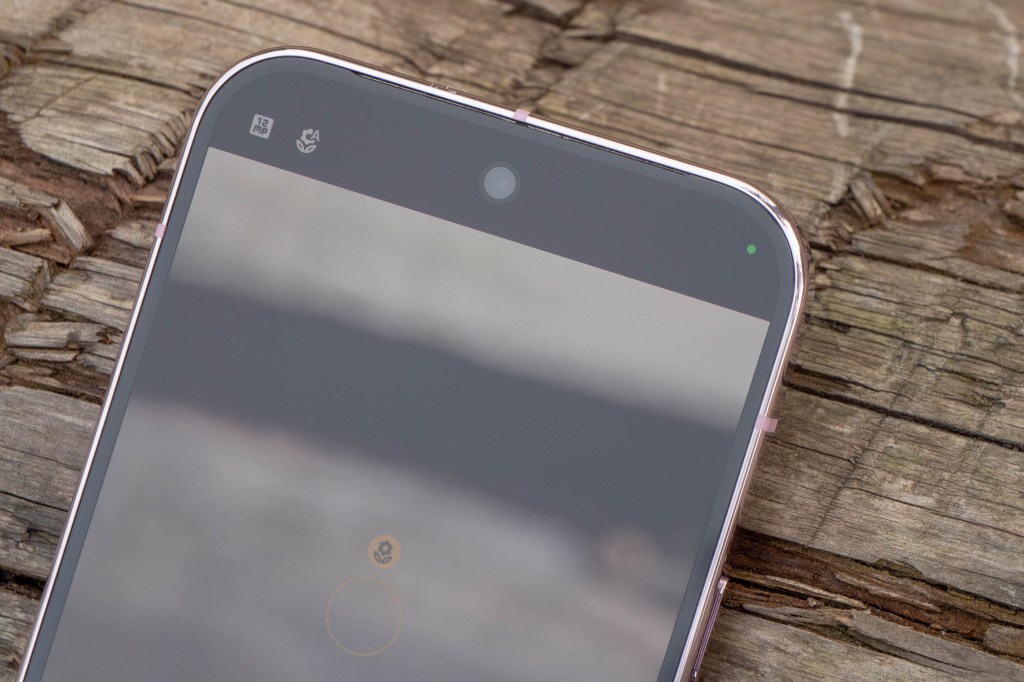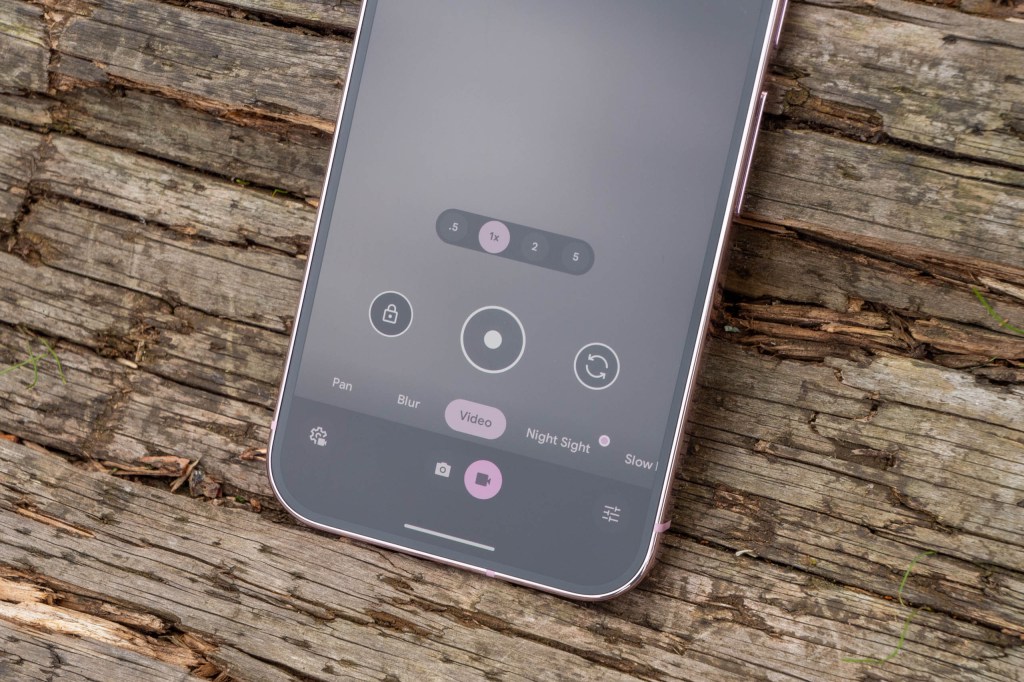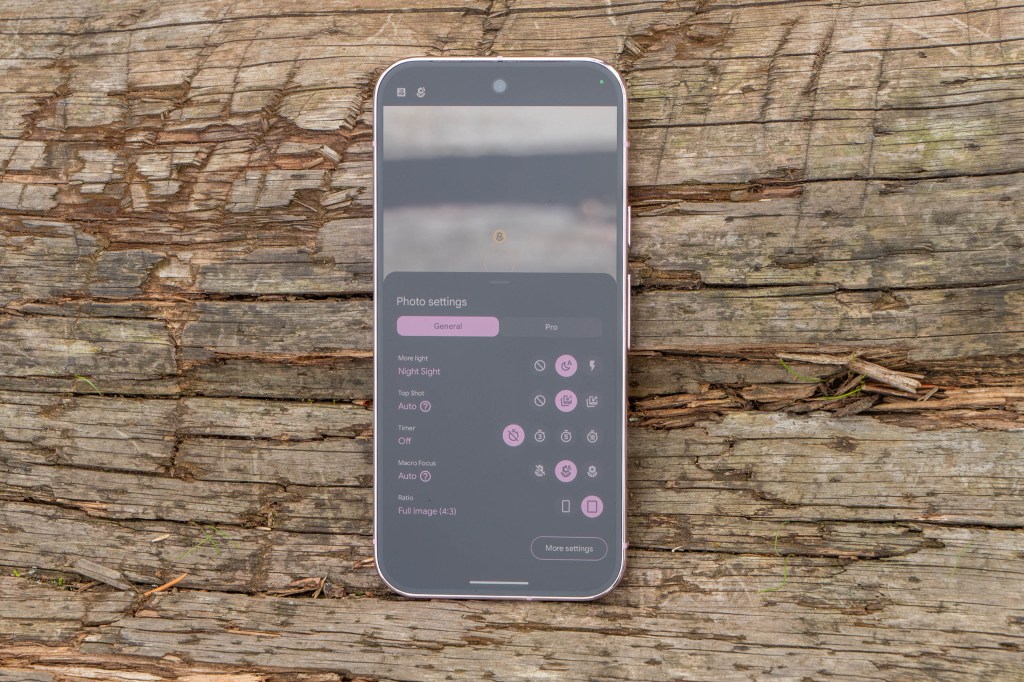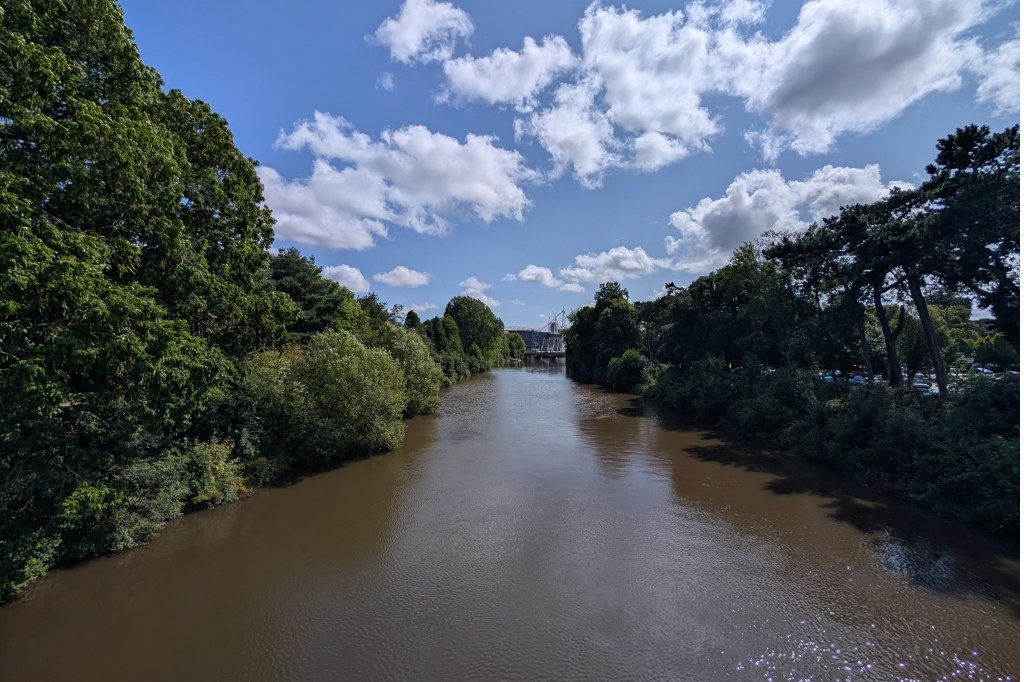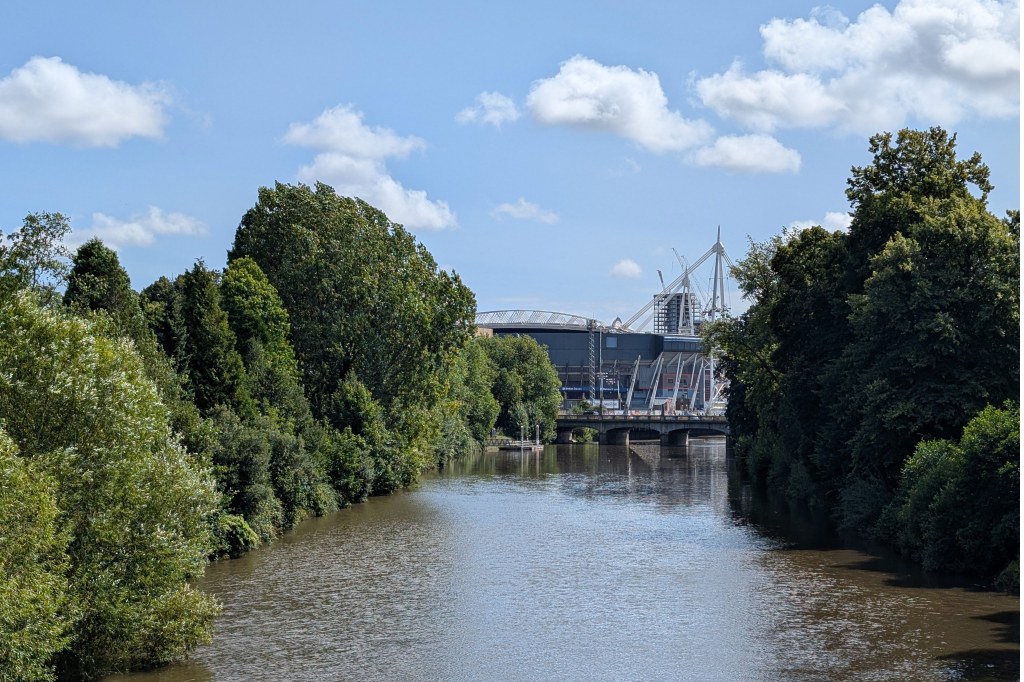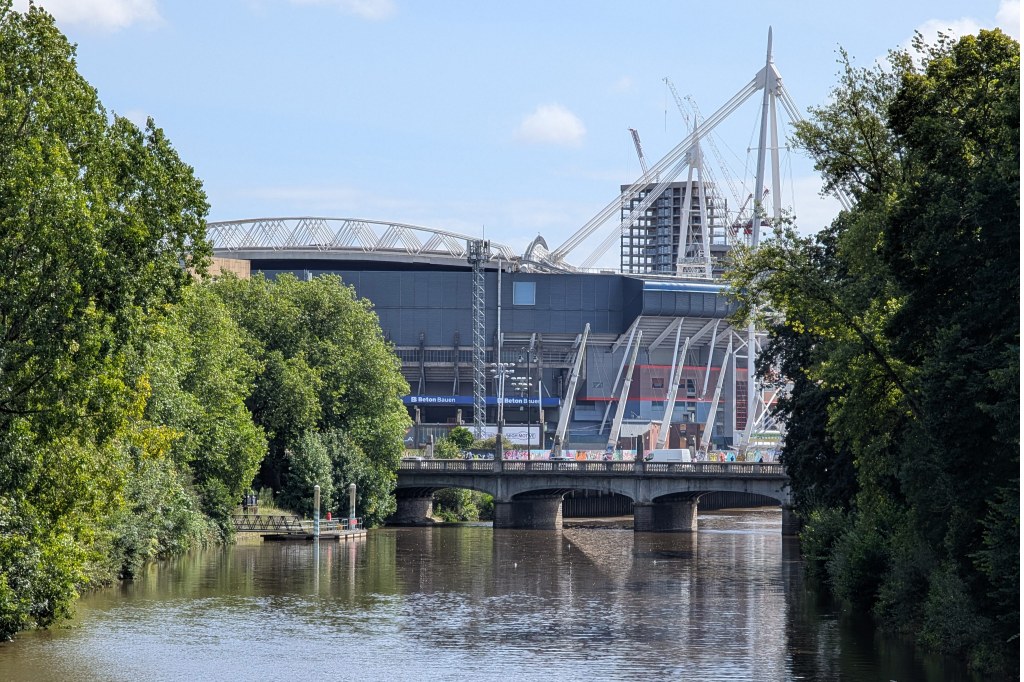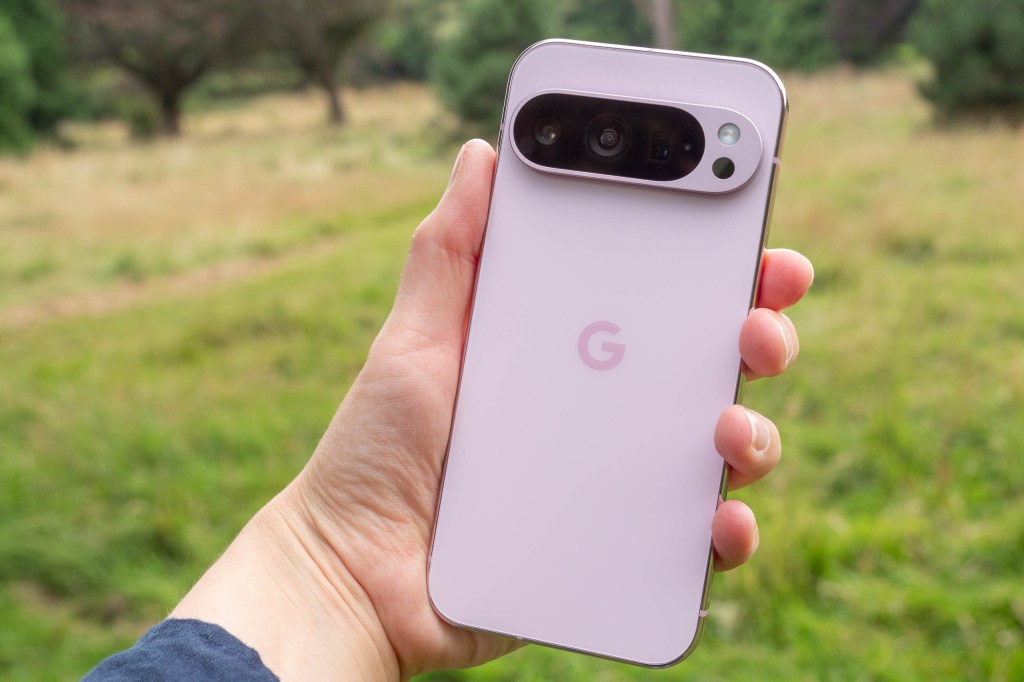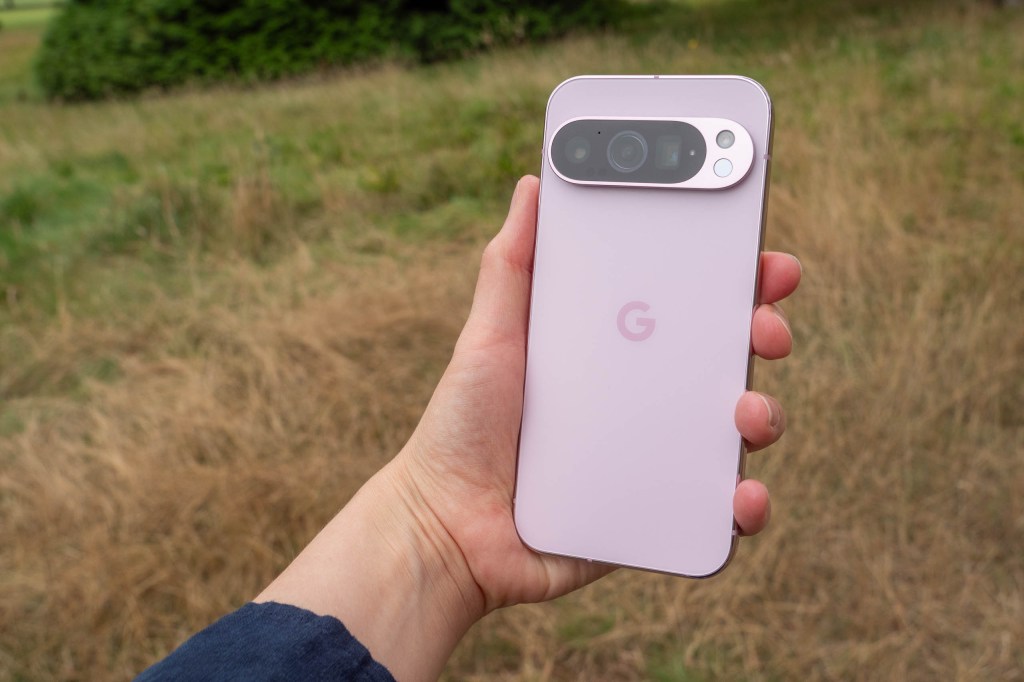Amateur Photographer verdict
A small flagship phone with great build quality and camera features that does a fantastic job in most situations.- Great image quality
- Improved selfie camera
- No camera punishment for choosing smaller screen
- AI features such as Add Me are great fun
- Average macro performance
- Expensive for additional storage options
- No true 8K video recording
The new Google Pixel 9 series includes two different 9 Pro options, giving you the choice between a smaller or a larger screen. The Google Pixel 9 Pro XL has already done enough to make it onto our list of the best camera phones for photography, but will the Google Pixel 9 Pro also be able to claim the same? With the same camera setup as its bigger sibling, it certainly should do, but let’s find out…
Google Pixel 9 Pro at a glance:
- Price as reviewed: £999-£1219
- 50MP main camera, f/1.68, OIS (1/1.31inch)
- 48MP ultra-wide, f/1.7, with macro AF (1/2.55inch)
- 48MP telephoto, f/2.8, 5x zoom, OIS (1/2.55inch)
- 42MP f/2.2 selfie camera with AF
- 4K 60fps video recording
- 8K video via cloud-based “Video Boost” (upscaling)
- 6.3-inch, 1-120Hz, 2000 nits peak brightness, Gorilla Glass Victus 2
- 4700mAh battery, 45W fast charging, wireless charging
- Google Tensor G4 processor, 16GB RAM
How we test smartphones
We review smartphones from the perspective of choosing one for its photography and camera performance. We look at what the Google Pixel 9 Pro offers, and the features included for photography and video, paying particular attention to the cameras on the phone, photo editing capabilities, as well as the output from each different lens.

For this year’s Pixel series, Google has decided to give users the choice between two different screen sizes. This is great news for people like me who would prefer a smaller phone for everyday usage and pocket friendliness, without having to skimp on the quality of the onboard camera. For the 9 Pro – which I’m reviewing here, you get a 6.3-inch screen, while the 9 Pro XL has a 6.8-inch screen.
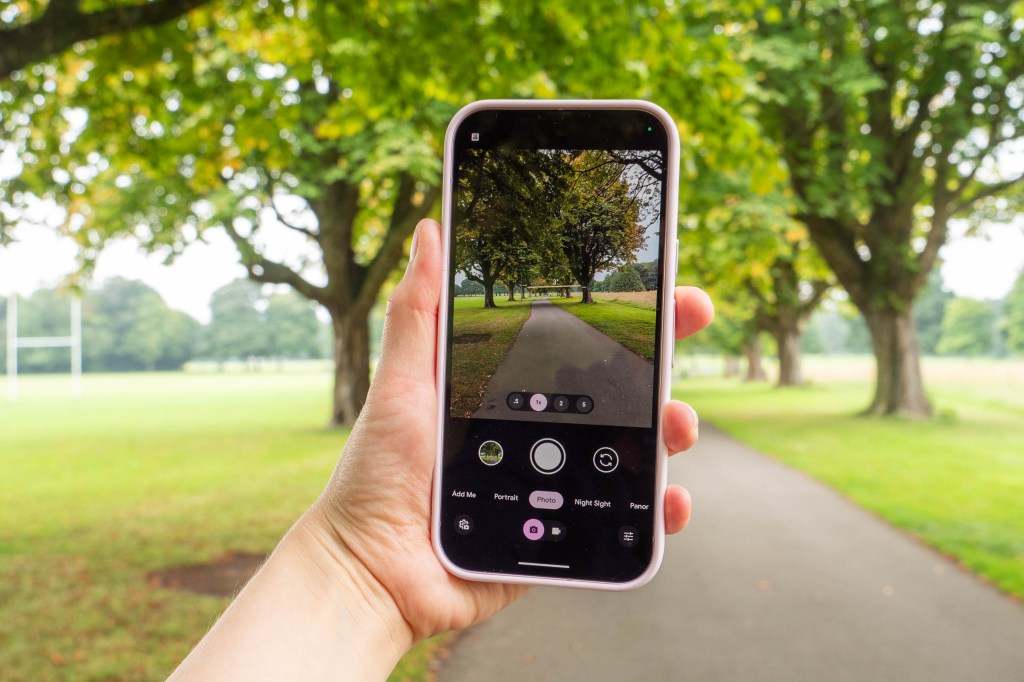
The triple lens camera set up is the same on both models, with a relatively gentle upgrade compared to last year’s Pixel 8 Pro. Most of the new features come via software upgrades, but I’ll go through that in more detail as we go through the review.
Another benefit of having a smaller screen is a lower asking price. At launch, the Google Pixel 9 Pro price is £999 for the lowest storage option, rising up to £1219 for the 512GB option (1TB is not available for the 9 Pro, only the 9 Pro XL).
Google Pixel 9 Pro – Features
The Google Pixel 9 Pro has a triple-lens camera setup, featuring a 1x, 0.5x ultrawide and a 5x telephoto lens. However, Google says that its AI technologies give you additional 2x and 10x options that are “just as good” as having real 2x/10x lenses – but we’ll see if that’s true later on. For those digital zoom options, Google uses Super Resolution zoom multi-shot technology.
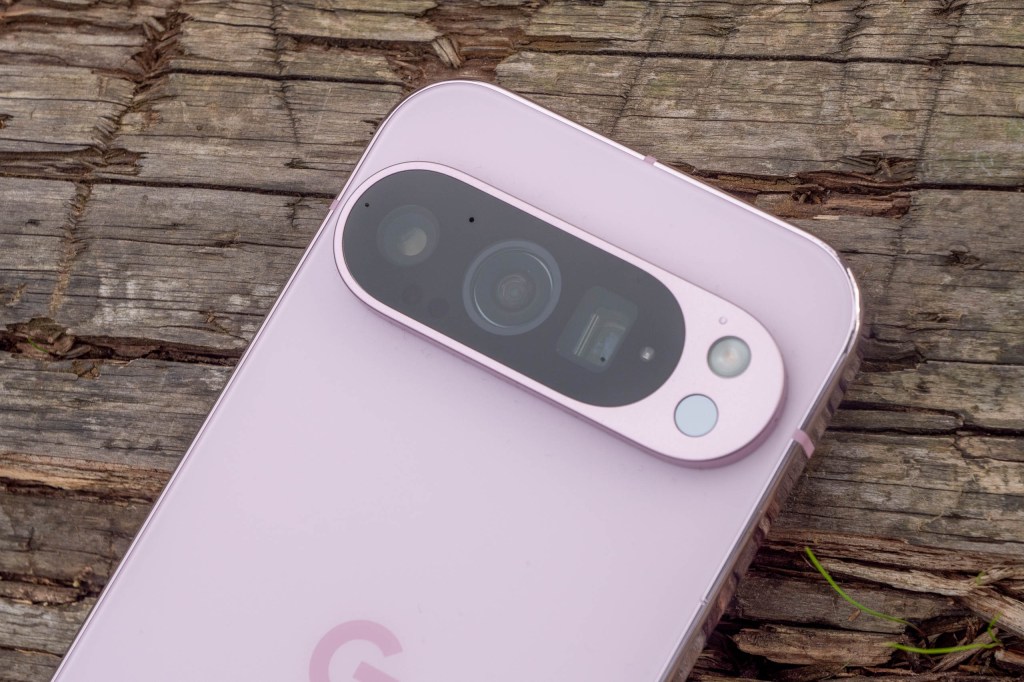
The 1x lens sits in front of a 50MP 1/1.31-inch sensor, and has an f/1.68 aperture. It offers an equivalent of 24mm. It’s a shame not to see a larger sensor coming to a Pixel phone yet. The ultrawide has a 48MP 1/2.55” sensor, with a slightly improved f/1.7 aperture (it was f/2.0 for the Pixel 8 Pro) and a 12mm equivalent focal length. The telephoto also has a 48MP 1/2.55” sensor, with an f/2.8 aperture, the zoom is a 5x zoom, with the equivalent focal length displaying as 110mm (which is just shy of 5x). It should be noted that despite all of these high-resolution sensors, the standard output is 12MP from each, due to pixel binning.
A significant upgrade from the Pixel 8 Pro is to the selfie camera, which has jumped in resolution to 42MP (from 10.5MP). It’s also wider, at 17mm equivalent (compared to 20mm). It has an f/2.2 aperture and autofocus. However, interestingly, despite the pixel count upgrade, it still outputs images at 10.5MP (pixel binning again). It’s not clear whether or not the sensor itself is larger than previously, as Google doesn’t disclose this in it specsheet.
Other improvements compared to the Pixel 8 Pro come largely to software. That includes an updated HDR+ feature for better colours and skin tones, improved exposure, sharpness, detail, contrast and more. Google also claims there have been improvements to low-light shooting, with some new functionality including Night-sight panoramic photos.
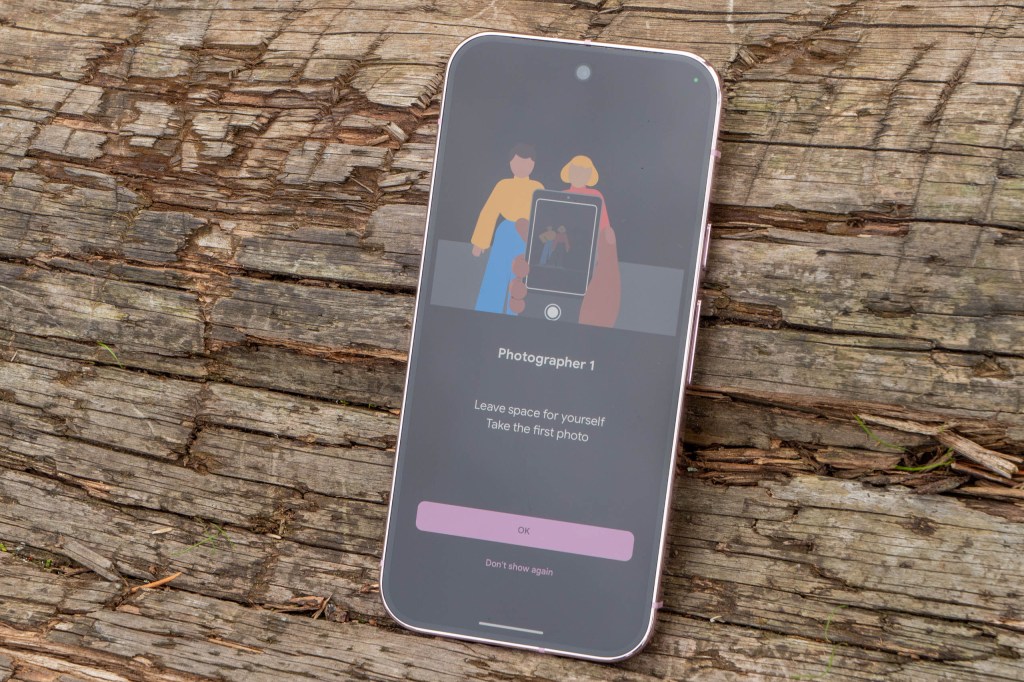
Last year we saw some new fun AI features, such as Best Take – where you can take a series group shots and then select different faces from all of the shots to get the best overall group image. This is still here, but the new big fun feature is “Add Me” which can be used when you want to take a group shot of 2+ people but have nobody else to take to the shot – nor a tripod to rest it on. I’ll explain exactly how it works later.
As a consequence of having a smaller screen size/body, the Pixel 9 Pro has a smaller battery too. The official rating here is 4700mah, but the quoted battery life is the same as for the larger 5060mah battery found in the Pixel 9 Pro XL. It’s likely that although the battery is smaller, less power is required to run the screen so the net result is very similar. Both wireless and fast charging are available – but you’ll need to buy special chargers for that. No charger at all is supplied in the box, but you can use any USB-C compatible charger to power it up. A USB-C to USB-C cable is included.
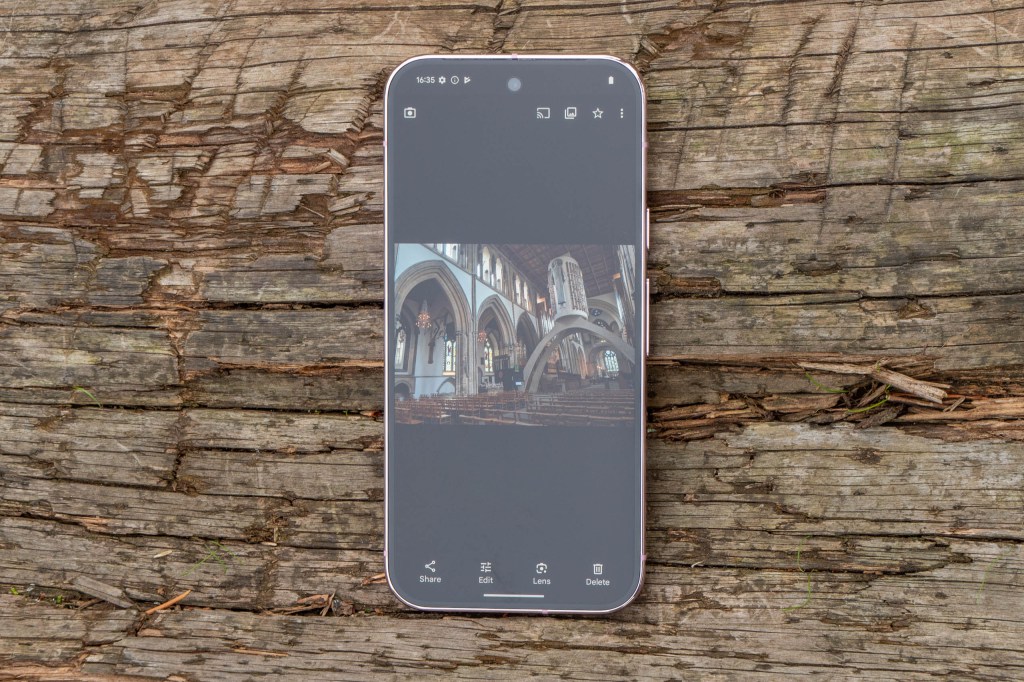
The base storage here is 128GB, which is a bit small by most other phone standards. The Pixel 9 Pro goes up to 512GB, with a 256GB option in between – but of course you’ll have to pay more to get it.
Google Pixel 9 Pro – Handling and Design
We usually find with flagship smartphones, that you get a huge screen size. While there are benefits to that – your photos / videos look great – it can be more awkward to use the phone for other purposes, such as texts and emails. It’s also harder to fit them in your pocket.
I think it’s great therefore that you can choose the Pixel 9 Pro in either regular or XL size without having to pay a penalty in the form of a lower-quality camera – it’s much easier to handle than other high-end phones such as the Samsung Galaxy S24 Ultra and the iPhone 15 Pro Max.

The screen is flat, while the body of the Pixel 9 Pro is square-ish with rounded corners. It’s very reminiscent of any of the recent iPhones – whether you like that is down to personal preference. I’ve been using the Rose Quartz colour way – pink essentially – which I find to be very charming. It’s nice to see fun colours for flagships, some companies stick with very dull colours for the higher end phones.
The camera array on the back has changed a little from the Pixel 8 Pro. Where there was previously a strip across the whole back, it’s now a sort of raised oval island. Some might hate it, but I quite like it – what are you gonna do? It protrudes quite far from the back of the phone, but my review sample came with a matching pink case which evened things out a bit. The case is also pretty much a necessity for stopping this very smooth phone from slipping out of your hand, or off the sofa, too, so I’d recommend you get one.
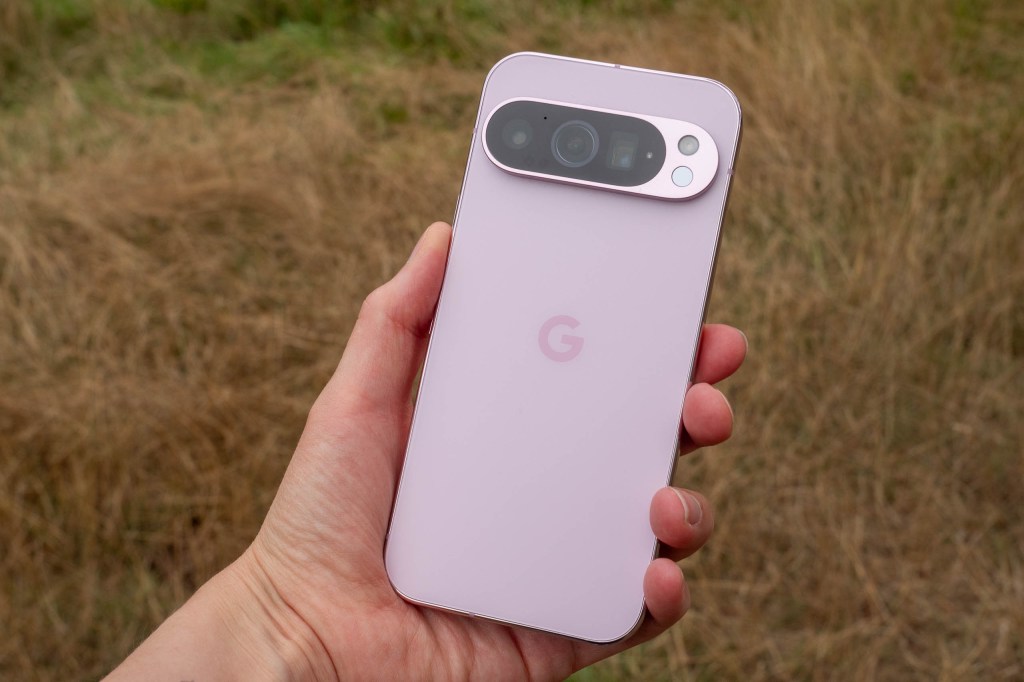
The 6.3” screen size of the Pixel 9 Pro gives you a 2856 x 1280 display, with a peak 2000 nit brightness that looks very good in most lighting situations. It also uses Gorilla Glass Victus 2, which should make it pretty tough. I haven’t tested that to its full limits, but it seems to have withstood opportunities for scratching pretty well.
Google Pixel 9 Pro – Native camera app
Compared to most other Android models, the Pixel’s native camera apps are a little bit simpler – again, the similarities to an iPhone way of being are quite striking. You can launch the native app by a quick double push of the power button on the side of the phone when the phone is locked.
There are quite a few different shooting modes to choose from however. The standard is Photo, and from this you can access the 1x, 0.5x and 5x lenses, as well as a 2x option, plus you can pinch to zoom up to 30x. There are two different locations for “Pro” options – something which was introduced for the Pixel 8 Pro series, and remains a little on the inelegant side. If you swipe up from the main screen, you’ll be able to change a variety of settings, such as setting as a timer and a setting the picture ratio. You can also tap a tab named “Pro”, where you’ll find the option to change your resolution from the default 12MP up to 50MP, and switch on raw format shooting.
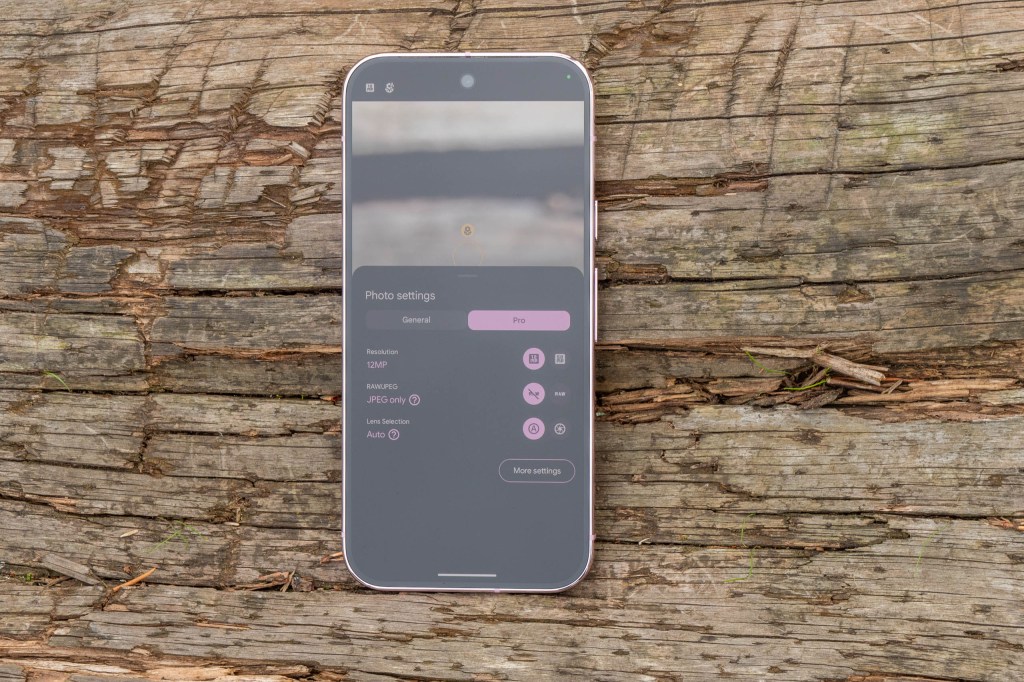
However, if you want more Pro options, then you’ll need to tap on a little settings icon in the bottom right hand corner of the screen. Now you’ll be able to change things such as shutter speed, ISO and white balance. Note that this settings option doesn’t appear if Night Sight has automatically switched on. To get around this, if you’re shooting in low light, you’ll need to switch off automatic Night Sight from the swipe up menu. As I said, this is not particularly elegant – but at least you’ve got some options.

Elsewhere, other shooting modes include Action Pan (for creating panning effects), Long Exposure (for creating, erm, long exposure effects), Night Sight (low light) and Portrait (shallow depth of field) mode. These are all existing modes that we’ve seen before on Pixel phones.

New however is the fun new “Add Me” mode. Essentially this allows you to take a photo of two or more people without need for an additional person to take the shot. What witchcraft is this? The phone will guide you through the process. First – get your friend to pose leaving space for yourself in a scene, and take a picture. Then, hand the phone to your friend, and now you pose while your friend takes the picture. Don’t worry, a guide will appear on screen to help you frame and position it to line things up. Then, by the magic of AI, the two photos will be combined together. It’s great fun to try and saves the awkwardness of asking a random person to photograph you. You can also have some fun with it – for example, we’ve pretended that my baby has a twin in the shot below – it’s realistic enough that it could make for some awkward questions at family reunions in 20 years’ time, I suppose.

Video options are found in a separate tab, but you can hold down the shutter button in the standard Photo mode to record clips (Note, not if you have 50MP resolution selected – 12MP only). If you switch to the video tab, you’ll now see there are additional modes to choose from, including Pan Blur, Night Sight, Slow Motion and Time Lapse.
You’ll also be able to change various settings, including resolution, frame rate and 10-bit HDR. A key part of Google’s marketing for this Pixel 9 Pro series is that it can now offer 8K video recording. However, it really should be stressed that this resolution is not available in-camera itself. Instead, you need to switch on Video Boost. Once you’ve done that, the phone will record your video and upload it to the cloud for “boosting”, giving you 8K quality footage in return. You can also use Video boost for other things too, such as additional stabilisation when zooming. Video boost takes a very long time to process and return however – a 10 second clip I recorded for 8K upscaling took about 3 HOURS to be returned. A 45 second clip I recorded for general boosting took about 8 hours to come back. If you’re in no rush that’s fine, but if you really do want 8K video recording, I’d suggest buying a phone that does it in-camera, like the Samsung Galaxy S24 Ultra.
As we saw with the previous Pixel 8 Pro series, there’s a host of advanced options after you’ve taken your photos too. The Magic Editor can be used to remove objects, people and move things around the scene. You’ll need to have an internet connection to do this and back up your photos to Google Photos. It’s not always the fastest, but it can be quite a useful tool for tidying up your photos.
Google Pixel 9 Pro – Image Quality and Performance
I’ve always been very impressed with Pixel performance over the years, and the 9 Pro builds on that solid reputation.

As usual, we find the best images come in good light where the colours are well saturated without being overly vibrant – something I’m finding to be a problem with a lot of smartphones just lately (perhaps it’s a taste thing). Either way, if you want something that’s quite natural looking, then the Pixel 9 Pro is a safe option.
All three of the cameras perform well in bright conditions, with lots of detail. Google’s promise that the 10x digital option is just as good as an optical lens might not be totally true, but I found it to be pretty good – and certainly usable for social sharing and the like. The 30x zoom option is far from the worst I’ve seen, and although I wouldn’t use it very frequently, if you really are desperate to get closer to the subject then it’s useful to have, especially for record shots only.
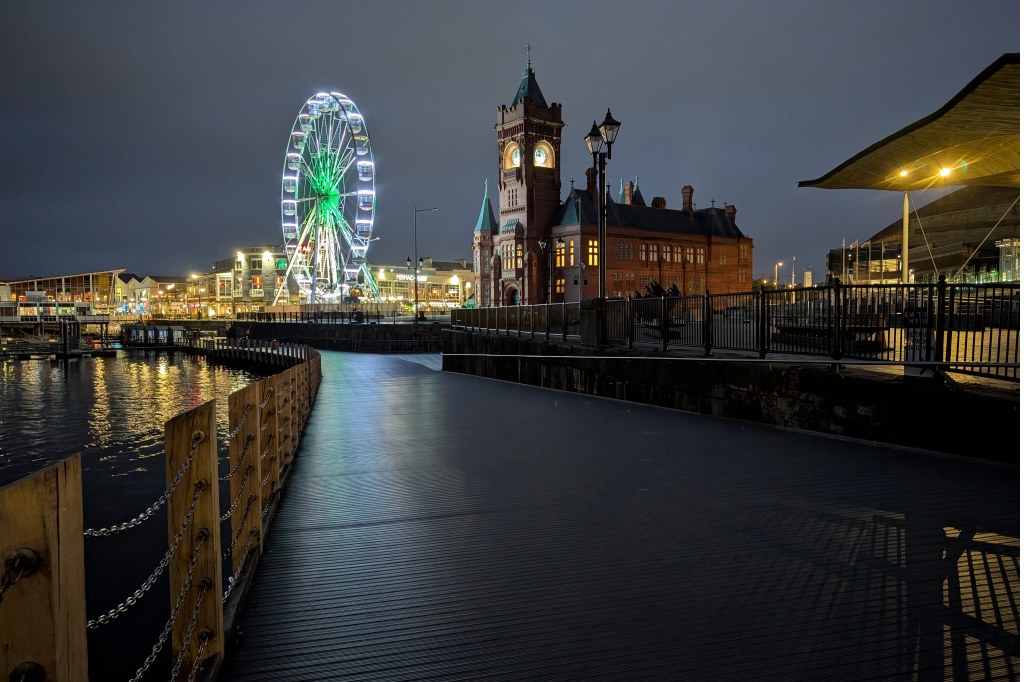
As I found with the Pixel 8 Pro, night mode for the Pixel 9 Pro is very impressive. The best results are delivered by the main lens, but the ultrawide also produces great shots too. The 5x lens is not too bad, but you can start to see a drop in quality even without zooming in. Digital zoom at 10x in low light is not too bad if you only need the image at a small size, but beyond that it’s not really usable.
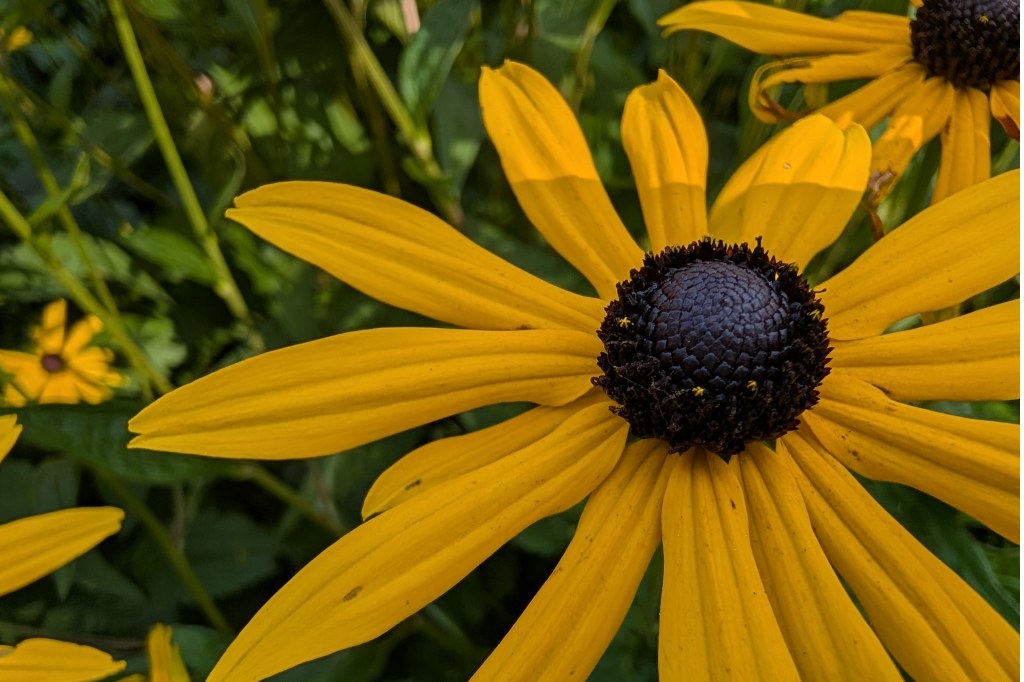
Using the ultrawide lens for macro is pretty common but we’re finding it doesn’t yield the best results – and the same is true for the Pixel 9 Pro. While the macro results are perfectly adequate, shooting in this way requires you to step into the available light which doesn’t help matters. Better results can be seen from the Xiaomi 14 Ultra, and even the Samsung Galaxy S24 Ultra, but the Pixel 9 Pro is about the same as the iPhone 15 Pro Max.

Portrait mode is very good, though I’d like to see a few more options available – such as being able to shoot at a longer focal length, or have different blur or lighting modes, such as we see from most other smartphones. What is created though has fairly realistic outlines, especially if you don’t scrutinise your images too closely.

The new selfie camera is an improvement on the previous 8 Pro with slightly more detailed images. It’s good to be able to use the Portrait option to create a shallow depth of field effect, though it has resulted in not so realistic edges on the left hand side of this selfie.
AI features are good fun to play with. The results are impressive and all are worth giving a go to see if you can get some fun results. The new “Add Me” feature is great to experiment with and produces some impressive results most of the time. Sometimes, you might find some strange artefacts in the background, or if the light changes between shots then the result may not be perfect, but still, if you can’t find someone else to take a photo of you, it’s handy to have.
My colleague Josh has written extensively about video in his review of the Pixel 9 Pro XL, but I have had pretty much the same experience too. Video quality on the whole is very good, with detailed, vibrant results that are pretty well stabilised. The Video Boost option can be useful if you want to upscale to 8K or do a lot of zooming in, but I think it’s probably more of a marketing gimmick than anything the average user will want to use frequently – especially given how long you have to wait for the processed files to come back.
Google Pixel 9 Pro – Value for Money
It used to be that Google Pixel phones were on the cheaper end of the scale, but for the last couple of generations – just like everything else on the planet – prices have really shot up.
At launch, the RRP of the Pixel 9 Pro is £999 for the 128GB base model, rising to £1219 if you want additional storage (512GB) and are happy to settle for the black colour.
There’s also a price in between if you can settle for 256GB, and/or you want one of the more interesting colour. 128GB is on the low side these days, so realistically you’re probably looking at £1099 for the 256GB option. At launch, there was special offer whereby you could get the 256GB option for £999 – but this is a limited offer which may well have expired by the time you’re reading this.
Last year’s Pixel 8 Pro very quickly dropped in price, so there’s a chance it could happen again with the 9 Pro series. And, in all fairness, it’s cheaper than other high-end flagships where you’ll be paying extra for a larger screen – for example the iPhone 15 Pro Max starts at £1199 (256GB).
Overall, while it’s fair to say that the Pixel 9 Pro isn’t a bargain, it’s relatively well-priced for what you get and competes well with others of its type. If you’re looking for something cheaper – take a look at last year’s Pixel 8 Pro (if you’re happier with a larger screen).
Don’t forget to check our guides to best budget smartphones if you’re looking to save some pennies.
Google Pixel 9 Pro – Verdict
We’ve long been impressed by the Pixel range of phones, and the Pixel 9 Pro continues with the good work done by its predecessors.
Personally, I’m really pleased to see a small flagship phone which doesn’t make you compromise on camera features. This used to be something which Apple offered, and perhaps might be again when the new iPhone 16 Pro series is announced (not long to wait now).
I like being able to choose a smaller screen and have a phone which is much more pocket-friendly and works better for me as an actual phone. It’s great to have the choice between that and the bigger screen for people who prefer the larger option.
Not everyone likes the design of the Pixel, and it’s fair to say it’s become very iPhone-like with the latest iteration, but I think it’s pretty nice. I like the pink colour way but perhaps would like to see some brighter options if I’m being really picky.
Most importantly of course is how the cameras work, and as usual, the Pixel 9 Pro does a fantastic job in most situations. I wouldn’t say it’s a huge step up in quality from the Pixel 8 Pro series, but, it’s enough of one to be noticeable. If you’re thinking of upgrading there’s possibly just about enough here to warrant it, but even more so if you’re coming from a Pixel 7 range or older.
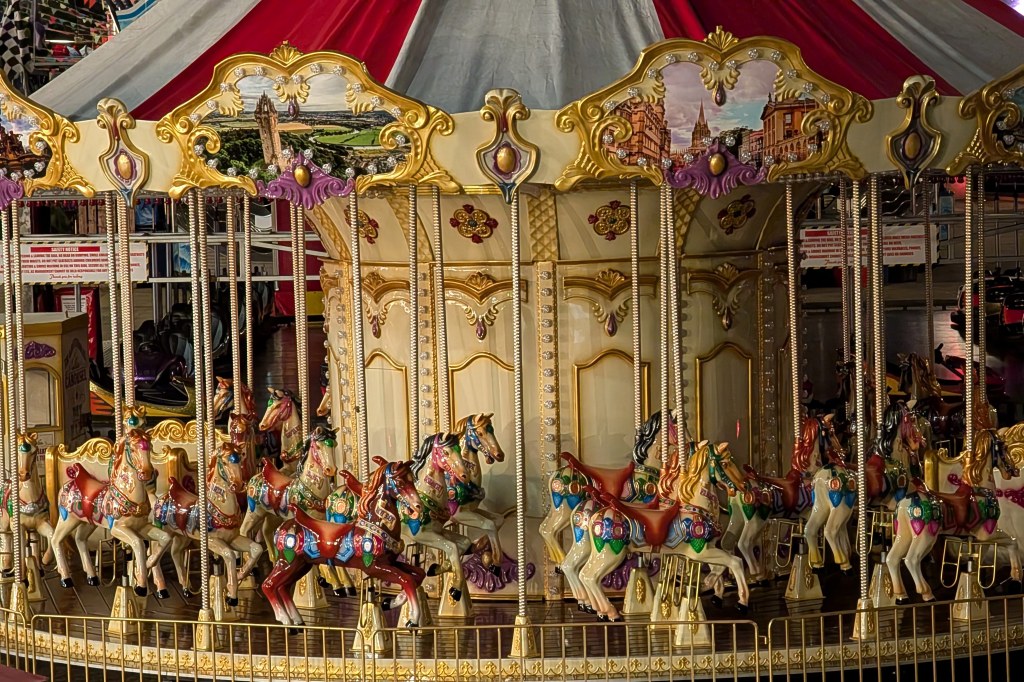
While it is great, there are some notable downsides. The price isn’t cheap – perhaps par for the course for flagships, but it’s a bit disappointing from a brand which used to offer far greater value for money. The smallest 128GB memory is also a little bit on the stingy side too. In terms of the camera, having no true 8K video recording and a mediocre macro mode stop it from being a 5 star device.
If however you’re keen on a small flagship, the Pixel 9 Pro is probably the best you can get right now.

Specifications
| Main camera | 50MP main camera, f/1.68, OIS (1/1.31inch), 24mm equivalent |
| Ultra-wide-angle camera | 48MP ultra-wide, f/1.7, with macro AF (1/2.55inch), 12mm equivalent |
| Telephoto camera | 48MP telephoto, f/2.8, 5x telephoto, OIS (1/2.55inch), 110mm equivalent. 2x ‘optical quality’ with 1x lens, 10x ‘optical quality’ with 5x lens. |
| Selfie camera | 42MP f/2.2 selfie camera with AF |
| Video | 4K video recording (60fps) (front/rear) 8K video provided with upscaling via the cloud/internet |
| Screen | 6.8inch screen, 1-120hz, 2000/3000nits, Gorilla Glass Victus 2 |
| Battery | 5060mAh battery |
| Processor | Google Tensor G4 processor, 16GB RAM |
| OS | Android 14 – with 7 years of updates |
| Dimensions | 152.8 x 72 x 8.5mm |
| Weight | 199g |
Related reading:
- iPhone 14 Pro vs Google Pixel 7 Pro – cameras compared
- Google Pixel 8 Pro vs Google Pixel 7 Pro: should you upgrade?
- Does anybody actually use Pro photo modes on smartphones?
Follow AP on Facebook, Twitter, Instagram, YouTube and TikTok.

